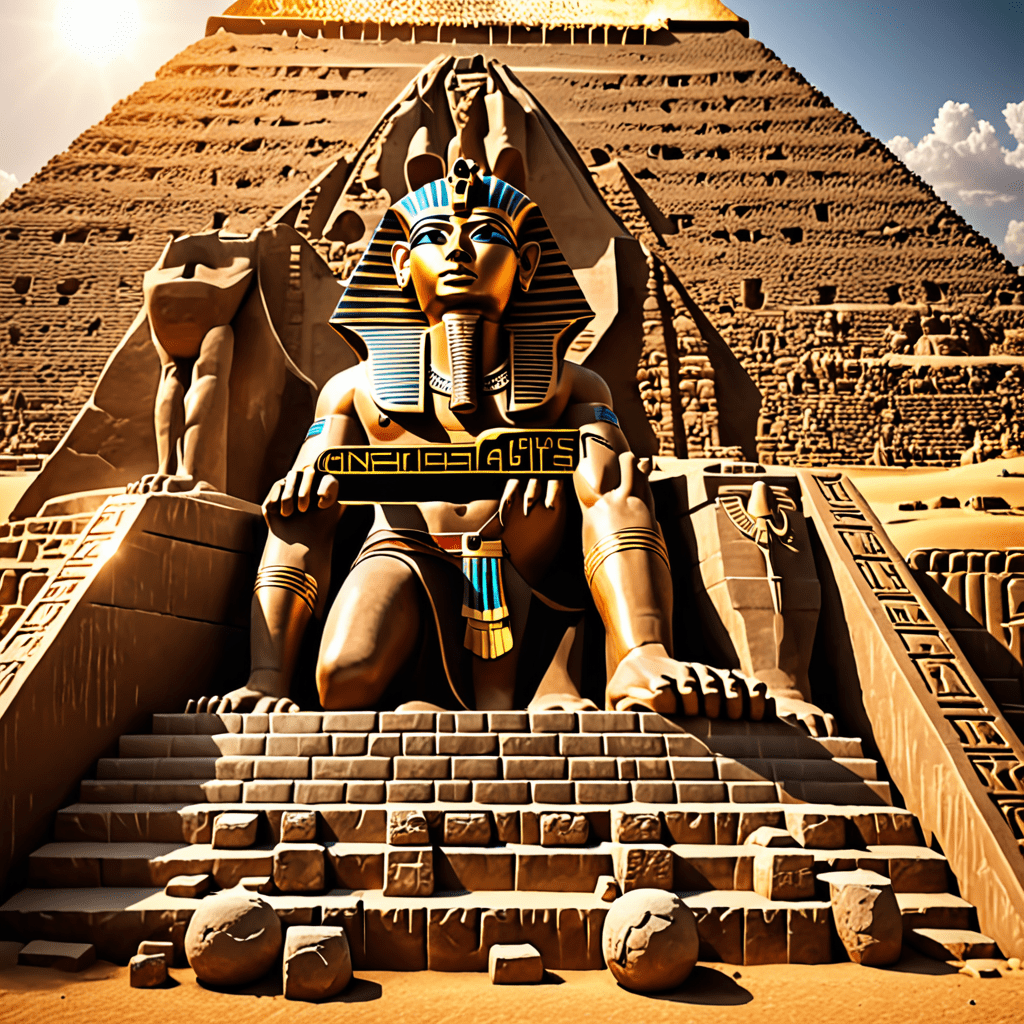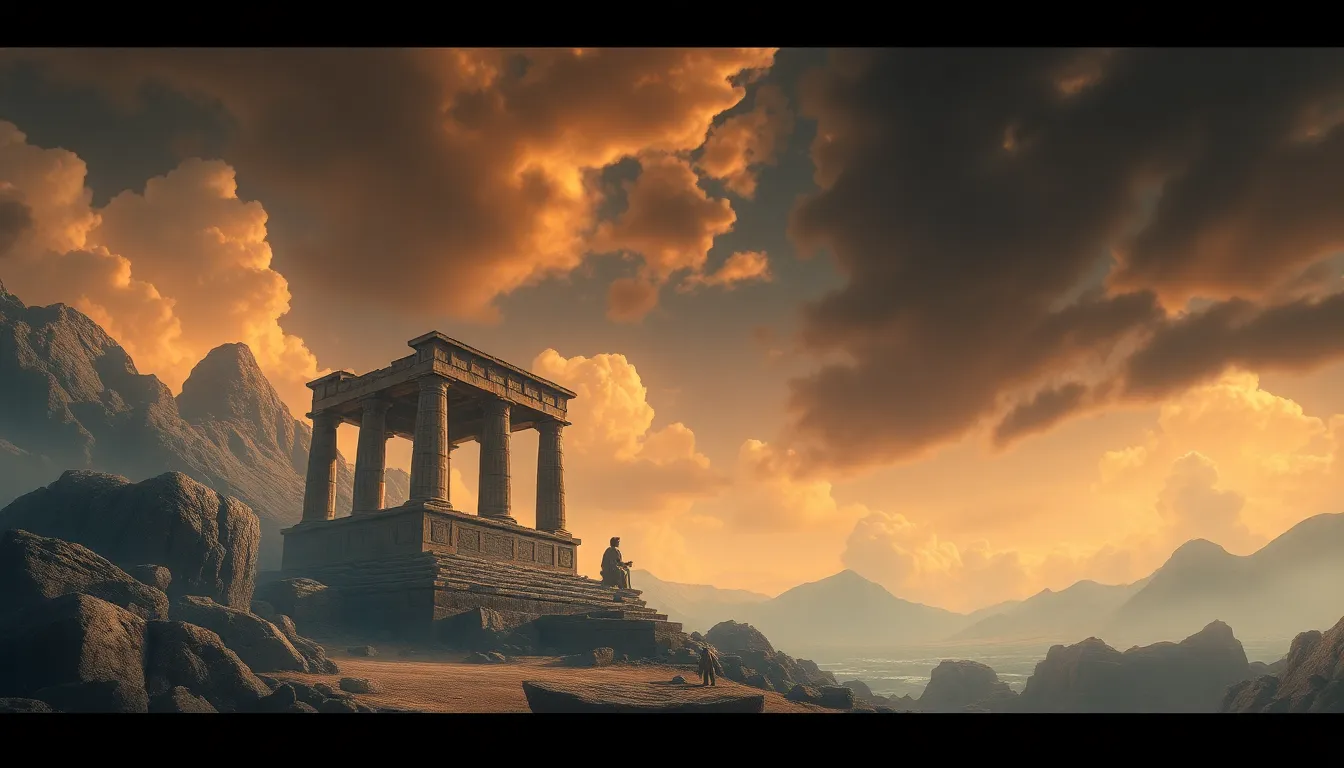The Mythology Behind the Pyramids of Egypt
When we think of the iconic pyramids of Egypt, we often envision magnificent structures built by ancient Egyptians as tombs for their pharaohs. While this historical aspect is well-known, the pyramids also hold significant connections to Egyptian mythology and religious beliefs.
The Role of Mythology in Pyramid Construction
Ancient Egyptians believed in a complex pantheon of gods and goddesses who governed various aspects of life. These deities were intricately linked with the sun, life, death, and the afterlife. The construction of the pyramids was heavily influenced by these beliefs, especially the association with the sun god, Ra. The shape of the pyramids was thought to mimic the rays of the sun, symbolizing the eternal life and power of the pharaohs buried within.
The Pyramid Shape and Mythological Significance
The massive triangular shape of the pyramids was not just a practical architectural design but also held profound mythological significance. Egyptians believed that the pyramid shape represented the primordial mound, a mythical structure where the god Atum created the world. It served as a symbol of creation, regeneration, and the cycles of life and death. The slanting sides were believed to help the deceased pharaoh ascend to the sky and join the gods in the afterlife.
Mythical Creatures and Protective Spirits
Ancient Egyptian mythology was rich with a variety of mystical beings such as the Sphinx and the serpent-like Apep. These creatures were often depicted in hieroglyphs, temple walls, and even on pyramid grounds. The Sphinx, with its human head and lion body, was considered a guardian figure, protecting the pharaoh’s soul and preventing evil forces from entering the tombs. Similarly, Apep, the embodiment of chaos and destruction, was believed to be kept at bay by the protective spirits surrounding the pyramids.
The Afterlife and Pyramid Rituals
Central to Egyptian mythology was the concept of the afterlife, where the soul of the deceased would undertake a perilous journey to reach the gods and achieve eternal life. The elaborate rituals performed during the construction and burial within the pyramids reflected these beliefs. Offerings, prayers, and magical spells inscribed on tomb walls were all meant to ensure the safe passage of the pharaoh’s soul to the realm of the gods.
Indeed, the pyramids of Egypt stand as magnificent testaments not only to the ingenuity of ancient Egyptian engineers but also to the deep intertwining of mythology, religion, and symbolism in their culture. Each block and carving holds layers of meaning, telling the story of a civilization that believed in the eternal power and presence of their gods and the continuity of life beyond death.
FAQ About the Mythology Behind the Pyramids of Egypt
What role did mythology play in the construction of the Pyramids of Egypt?
Mythology played a significant role in the construction of the Pyramids of Egypt as they were believed to be the final resting place for the pharaohs who were considered divine rulers. Mythological beliefs about the afterlife, resurrection, and the journey of the soul influenced the design, orientation, and symbolism of the pyramids.
Which Egyptian gods and goddesses were associated with the Pyramids?
The ancient Egyptians associated various gods and goddesses with the Pyramids. Osiris, the god of the afterlife and resurrection, was closely linked to the concept of rebirth and played a crucial role in the mythology surrounding the pyramids. Isis, the goddess of magic and motherhood, was also connected to the pyramid complexes.
What symbolic significance do the Pyramids hold in Egyptian mythology?
The Pyramids of Egypt symbolize the pharaoh’s ascent to the heavens, mirroring the mythological journey of the sun god Ra as he crossed the sky. The shape of the pyramids, with their pointed apex reaching towards the sky, represented the concept of reaching the realm of the gods in the afterlife.
How did mythology influence the layout and design of the Pyramids?
Mythological beliefs guided the layout and design



